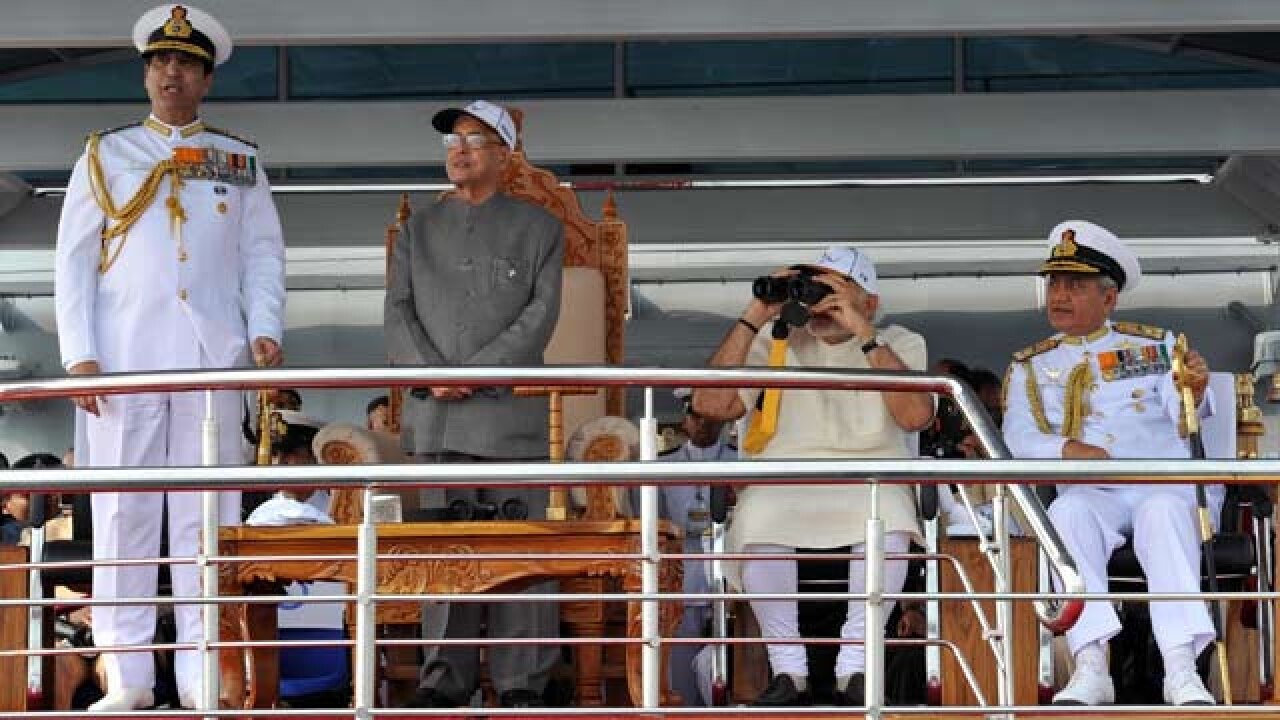
Inaugurating the Indian Navy’s biggest event ever, the 11th Fleet Review and 2nd International Fleet Review (IFR) 2016 held at Vishakhapatnam on the East Coast on February 6, 2016, President Pranab Mukherjee greatly appreciated the prowess of the Navy that had brought together navies from across the globe with a common desire to use the seas to promote peace and to develop partnerships for securing maritime future in consonance with the IFR theme ‘United Through Oceans’. The navies of the world have a unique role in promoting goodwill and nurturing peace and tranquillity of the oceans, he said. The President urged the global participants to carry back a message of global peace and brotherhood. Dolphin which is often regarded as the Earth’s most intelligent animal was the IFR mascot. 'Ahoy-Hello-Namaste' was the theme song for the events which will last until February 8. The Indian Naval Symphonic Orchestra played the naval ensemble that dates back to 1945.
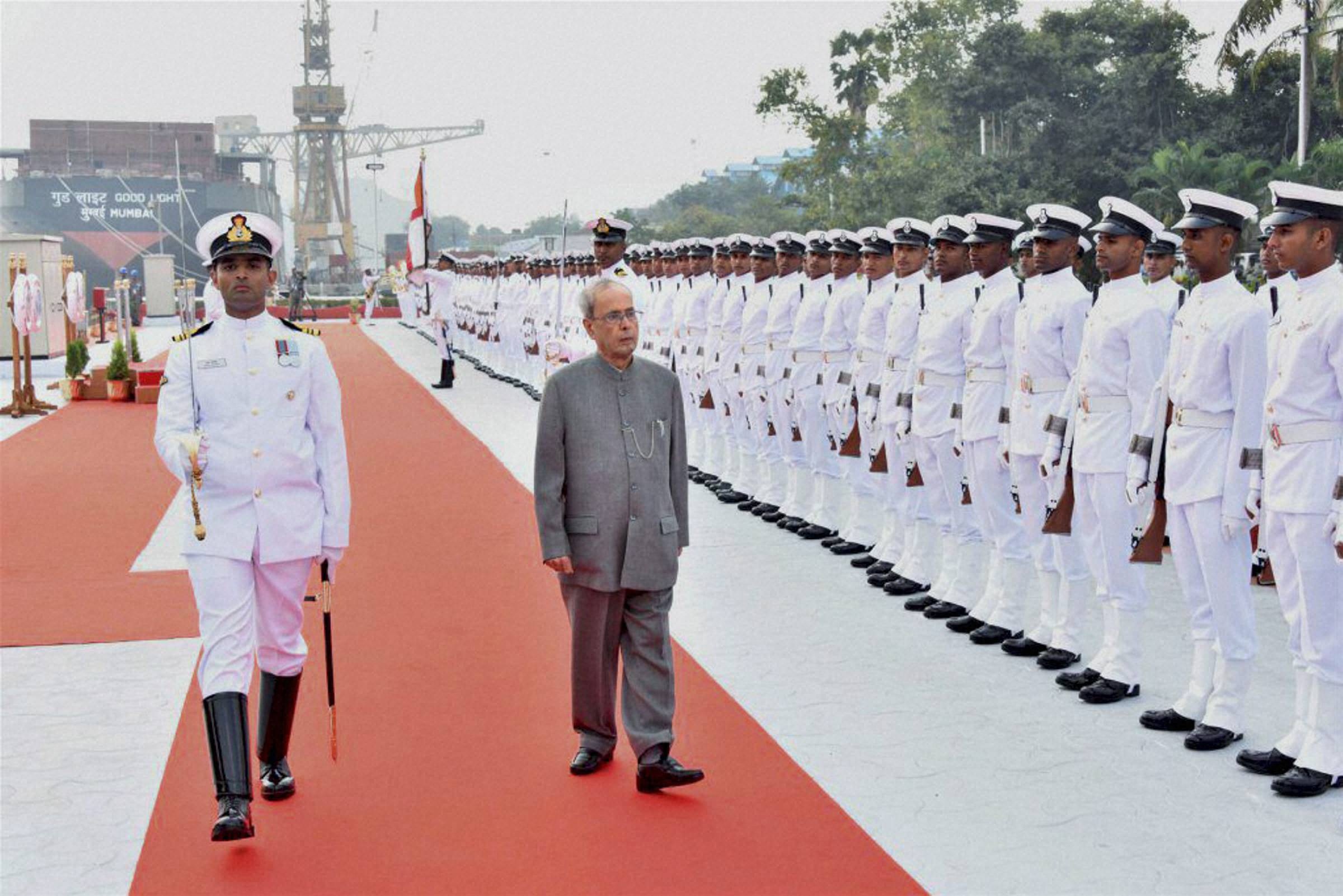
President Pranab Mukherjee inspecting the Guard of Honour. PTI
The Supreme Commander of the Indian Armed Forces was accorded a 21-gun salute. Later, on board the Presidential yacht INS Sumitra that supported the Ashoka emblem, he along with PM Modi, Defence Minister Manohar Parrikar and the three Service Chiefs reviewed the naval flotilla of 71 Indian ships, including 24 warships, and ships from 24 other countries.
A total of 50 Navies participated in the IFR. The Chief of the Naval Staff Admiral RK Dhowan conducted his guests. Resounding sounds of ‘Jaikar’ by sailors echoed over the waves, carrying the promise of the Navy’s allegiance to the State. The ships under review stood in six columns with sailors dressed in white ceremonial uniforms. Majestic aircraft carriers, INS Vikramaditya and INS Virat were anchored in the backdrop. Also in attendance were warships INS Kolkata, Mysore, Ranvijay, and the latest to join the fleet INS Kadmat. The Indian Coast Guard and the Mercantile Marine also participated.
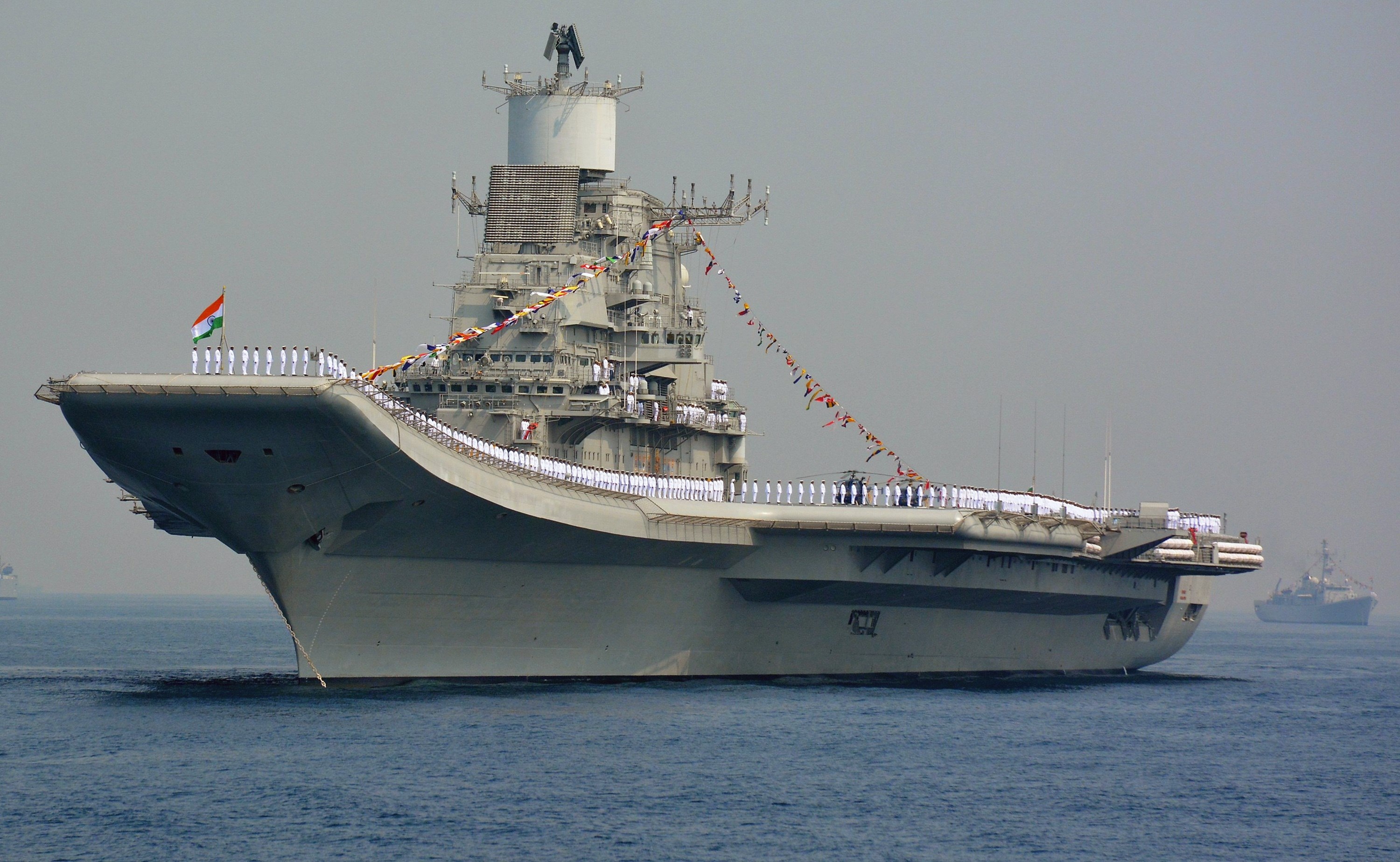
Indian Navy personnel stand on the INS Vikramaditya, a modified Kiev-class aircraft carrier. AFP
Naval Air Arm’s fixed and rotary wing aircraft took part in the 71 aircraft fly-past. The Swedish Skycats aircraft display team performed wing walking aerobatics. On display were three kilo-class submarines— INS Sindhuvir, Sindhukriti and Sundhuraj. All major navies including those from the US, Russia, China, France, and the UK participated in the event. The foreign ships included United States' USS Antietam, a guided missile corvette, HMS Defender of UK, JS Matsuyuki of Japan, IRIS Alvand of Iran, BNS Somudra Joy from Bangladesh, Liuzhou from China, and HMAS Darwin from Australia.
The Andhra Pradesh Chief Minister N Chandrababu Naidu arrived on February 5 and laid a wreath at the Victory-at-Sea memorial on the Vizag beach to pay homage to the martyrs. He later inaugurated the IFR village and the maritime exhibition organised by the Navy on the grounds of the Andhra University Engineering College. He said Visakhapatnam was the eastern gateway to the country. A band concert by foreign naval bands was followed by a Presidential Banquet on the evening of February 6. Other events to follow include an International maritime Conference and an International City parade for public.
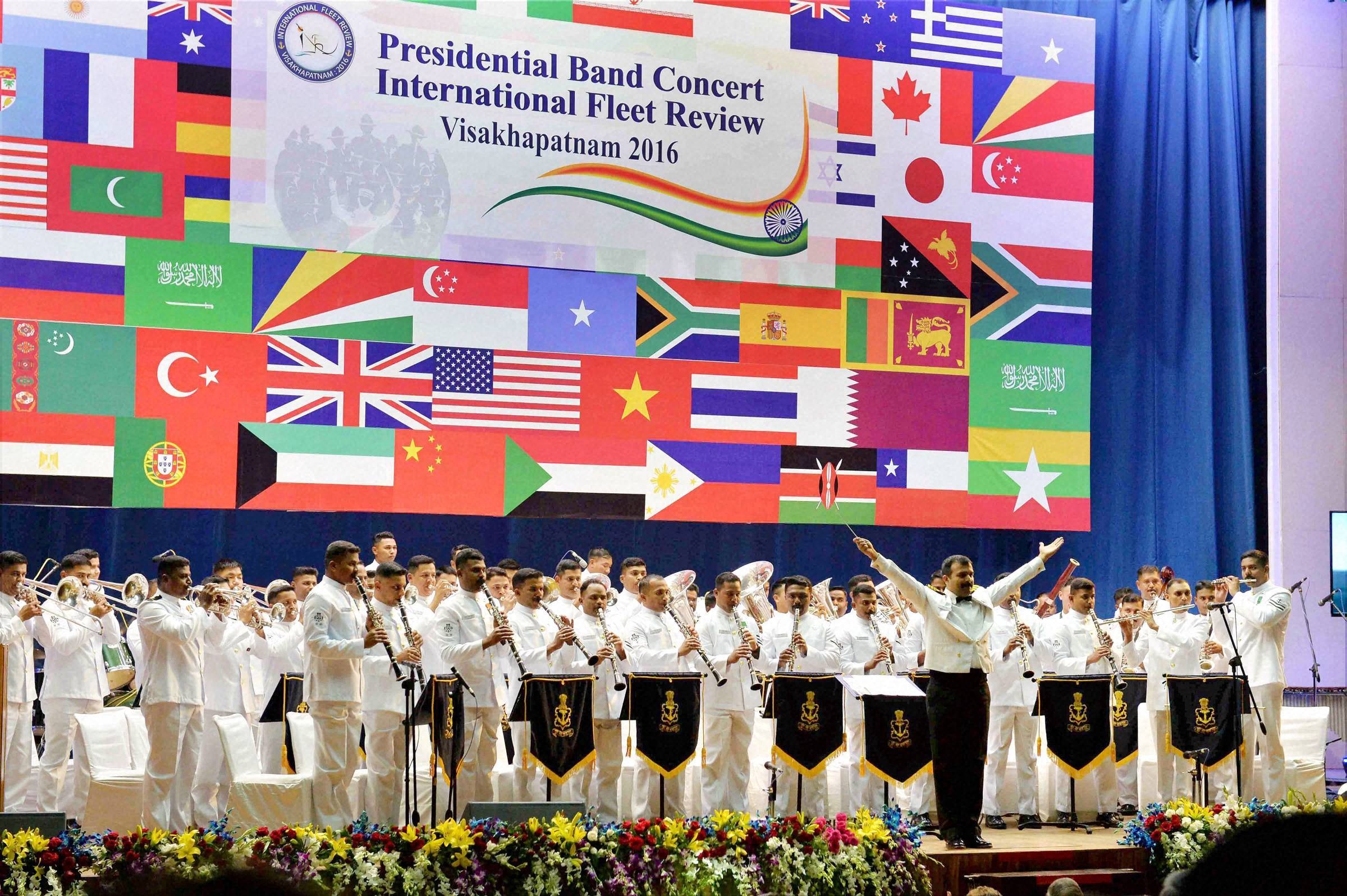
The naval band performs at Presidential Band Concert. PTI
Fleet Review is a practice that dates back to the 14th century when England’s King Edward III conducted one before sailing to war against France. Originally they were held only when the fleet was mobilised for war as a show of strength to discourage potential enemies or celebrate a naval victory. In March 1700, the English fleet was lined up in show of strength during visit of Peter the Great of Russia. However, in 19th century, they were often held for special royal events like coronations and jubilees. The navies world over have conducted Fleet Reviews to symbolise their loyalty, allegiance to the nation, and strengthen bonds between the sailors and the state. Fleet Reviews in India have been traditionally held on the Western Sea Board, but IFR 2016 was a massive show of strength on the east coast. India’s geo-political position, astride the major shipping routes of the Indian Ocean, gives it a pivotal maritime role. The first Presidential fleet review was by Dr. Rajendra Prasad on October 10, 1953. The last, tenth review, was held on December 20, 2011 by President Pratibha Patil. The first and the only other International Fleet Review called ‘Bridges of Friendship’ was held in February 2001 in Mumbai.
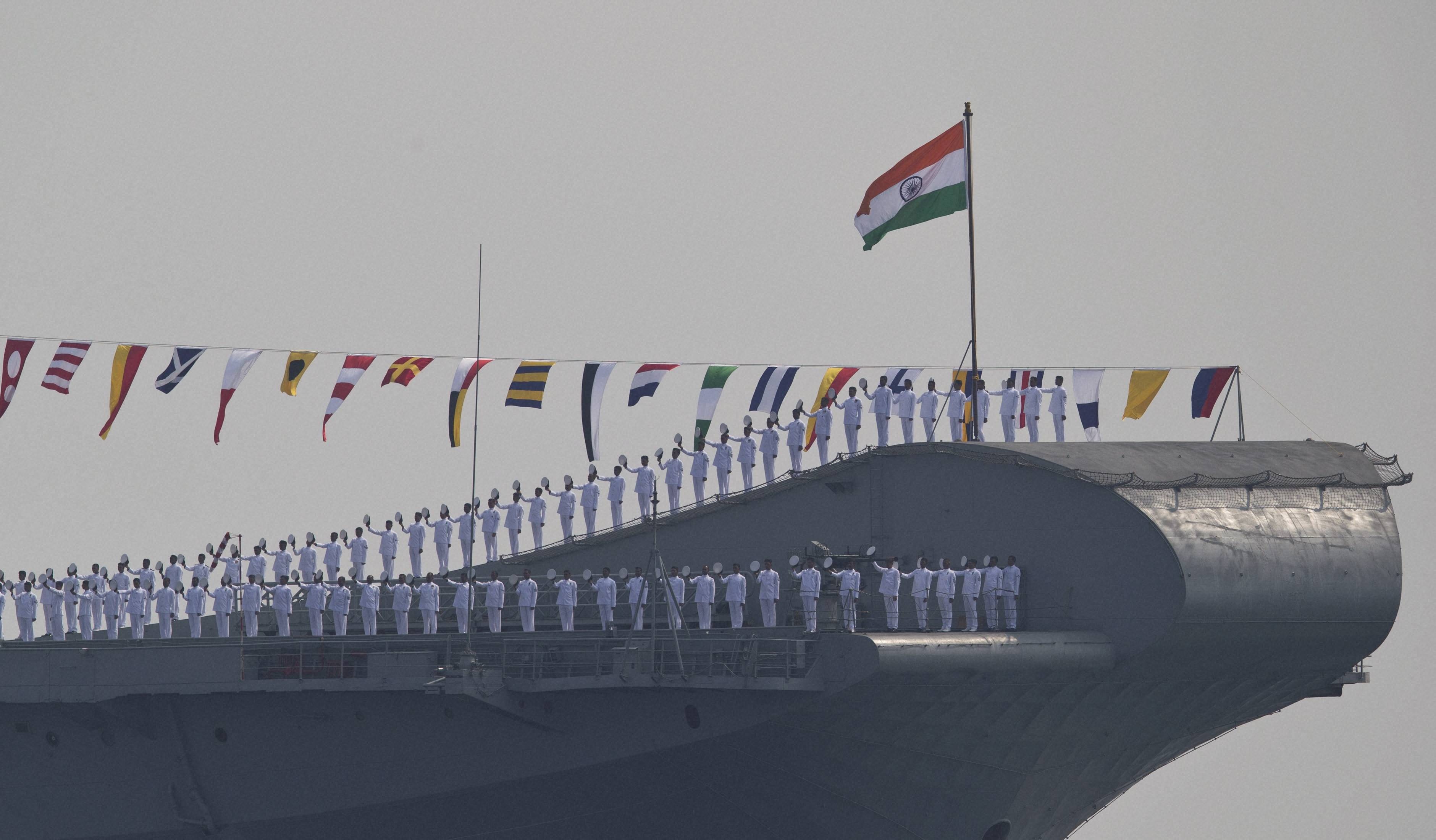
Indian sailors aboard the Indian aircraft carrier Viraat, line up to salute the President Pranab Mukherjee. PTI
The leading nations of the world use the opportunity provided by the Fleet Review to enhance mutual trust and confidence with their maritime neighbours and the event provides the host nation an occasion to display its own naval prowess and assuring the countrymen of Navy’s preparedness. The review inspires the men to avow their allegiance to their country and fight to preserve its sovereignty. The first engagement in action for the Indian Navy was against the Portuguese during the liberation of Goa in 1961. The Navy had a limited role in the 1962 war with China and 1965 war with Pakistan. The Indian Navy came of age during 1971 Indo-Pak war when it blockaded the West and East Pakistani ports. Its moment of glory was when it destroyed Pakistan Navy’s lone long-range submarine PNS Ghazi on December 4, 1971, day that is also celebrated as Navy Day. The Navy has earned the nation’s respect during various incidents in the Indian Ocean. IFR 2016 was a great show and has made Indians proud of their Navy.